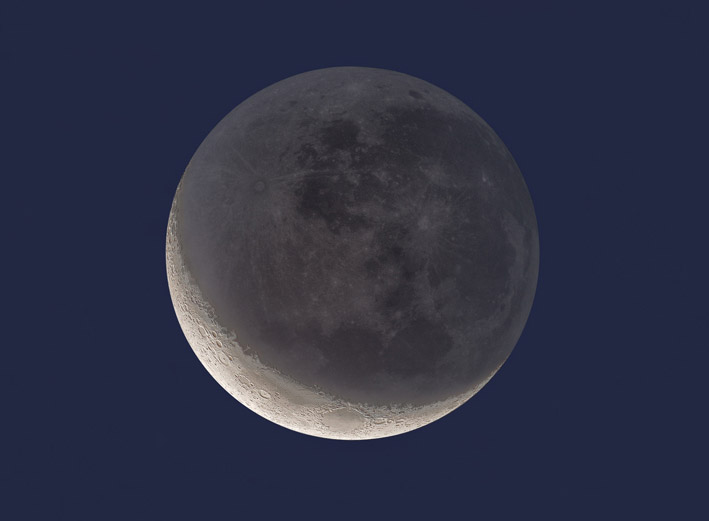Difference between revisions of "February 9, 2011"
| Line 3: | Line 3: | ||
<!-- ws:start:WikiTextHeadingRule:0:<h1> --> | <!-- ws:start:WikiTextHeadingRule:0:<h1> --> | ||
<!-- ws:start:WikiTextLocalImageRule:6:<img src="/file/view/LPOD-Feb9-11.jpg/199935050/LPOD-Feb9-11.jpg" alt="" title="" /> -->[[File:LPOD-Feb9-11.jpg|LPOD-Feb9-11.jpg]]<!-- ws:end:WikiTextLocalImageRule:6 --><br /> | <!-- ws:start:WikiTextLocalImageRule:6:<img src="/file/view/LPOD-Feb9-11.jpg/199935050/LPOD-Feb9-11.jpg" alt="" title="" /> -->[[File:LPOD-Feb9-11.jpg|LPOD-Feb9-11.jpg]]<!-- ws:end:WikiTextLocalImageRule:6 --><br /> | ||
| − | <em>image by [mailto:laurel3@charter.net | + | <em>image by [mailto:laurel3@charter.net Jimmy Eubanks], Boiling Springs, SC</em><br /> |
<br /> | <br /> | ||
The Sun is much brighter than the Moon, and the planets are fainter, but the Moon probably has the greatest contrast in brightness of any celestial object. This is especially true when the Moon is just a few days from new. Then a slender crescent is blazingly bright compared to the much larger Earth-lit zone. Imaging detail on both parts of such crescents is difficult, but using [/April+5%2C+2008 high dynamic range] [http://lpod.wikispaces.com/August+30%2C+2009 software] to combine multiple exposures of different durations does work. Here Jimmy has combined 5 exposures to try to capture all parts of the Moon's dynamic range of brightness. Its not a view you can get with just eyeballs.<br /> | The Sun is much brighter than the Moon, and the planets are fainter, but the Moon probably has the greatest contrast in brightness of any celestial object. This is especially true when the Moon is just a few days from new. Then a slender crescent is blazingly bright compared to the much larger Earth-lit zone. Imaging detail on both parts of such crescents is difficult, but using [/April+5%2C+2008 high dynamic range] [http://lpod.wikispaces.com/August+30%2C+2009 software] to combine multiple exposures of different durations does work. Here Jimmy has combined 5 exposures to try to capture all parts of the Moon's dynamic range of brightness. Its not a view you can get with just eyeballs.<br /> | ||
<br /> | <br /> | ||
| − | <em>[mailto:tychocrater@yahoo.com | + | <em>[mailto:tychocrater@yahoo.com Chuck Wood]</em><br /> |
I got home at 2:20 AM Tuesday from my great trip to Astrofest in London. I thank Maurice Collins for keep fresh LPODs coming!<br /> | I got home at 2:20 AM Tuesday from my great trip to Astrofest in London. I thank Maurice Collins for keep fresh LPODs coming!<br /> | ||
<br /> | <br /> | ||
Revision as of 17:30, 11 January 2015
Lightening the Shadows

image by Jimmy Eubanks, Boiling Springs, SC
The Sun is much brighter than the Moon, and the planets are fainter, but the Moon probably has the greatest contrast in brightness of any celestial object. This is especially true when the Moon is just a few days from new. Then a slender crescent is blazingly bright compared to the much larger Earth-lit zone. Imaging detail on both parts of such crescents is difficult, but using [/April+5%2C+2008 high dynamic range] software to combine multiple exposures of different durations does work. Here Jimmy has combined 5 exposures to try to capture all parts of the Moon's dynamic range of brightness. Its not a view you can get with just eyeballs.
Chuck Wood
I got home at 2:20 AM Tuesday from my great trip to Astrofest in London. I thank Maurice Collins for keep fresh LPODs coming!
Technical Details
Orion EON 120ED refractor + Canon XSi. 5 images with exposures ranging from 1/640 sec. to 8 Seconds was used.



